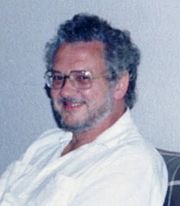
Bengt Holbek
Encyclopedia
Bengt Holbek was a Danish folklorist who wrote one of the definitive works of fairy tale
scholarship entitled Interpretation of Fairy Tales (1987). This 660 page book details a method for use in the analysis of fairy tales and applies it to the tales found in the repertoires of five Danish peasants collected by Evald Tang Kristensen
This 660 page book details a method for use in the analysis of fairy tales and applies it to the tales found in the repertoires of five Danish peasants collected by Evald Tang Kristensen
in the mid 19th century.
In brief, Holbek posits that fairy tales can be broken down into five "moves" which work to reconcile the three main tensions which are addressed by the fairy tale. These tensions are those between "youths" and "adults", those of "low status" and those of "high status", and "male" and "female". The relationships between these are frequently represented on a cube. Imagine a cube, place youth on the left, adulthood on the right, low status on the bottom, high status on the top, male on the front and female on the back. It is Holbek's estimation that one of the most important things that distinguish the fairy tale from the more general category of folktale is the fact that the tale ends with a marriage. By his definition, if the tale one is considering does not involve a marriage, it is not a fairy tale.
At the beginning of a fairy tale, the protagonist
, who can be either male or female, generally starts out as an unmarried youth of low status. This person generally becomes involved with an unmarried youth of high status and must undergo trials in order to prove their worth, thereby attaining high status so as to be worthy of their lover. Here the characters move from the bottom of the cube to the top of it. Over the course of the tale, the characters also cease to act as children and pass from the sphere of youth to the sphere of adulthood. The characters move from the left half of the cube to the right. The tension between male and female is negotiated at the end by the marriage between the protagonist and their lover, rendering the space between the front and back of the cube irrelevant.
Holbek's moves can be described as follows:
Fairy tale
A fairy tale is a type of short story that typically features such folkloric characters, such as fairies, goblins, elves, trolls, dwarves, giants or gnomes, and usually magic or enchantments. However, only a small number of the stories refer to fairies...
scholarship entitled Interpretation of Fairy Tales (1987).

Evald Tang Kristensen
Evald Tang Kristensen was a Danish folklore collector and author. Working first as a schoolteacher and later solely as a collector, he assembled and published a huge amount of detailed information on all aspects of folklore as he visited country people throughout his native Jutland.-Early...
in the mid 19th century.
In brief, Holbek posits that fairy tales can be broken down into five "moves" which work to reconcile the three main tensions which are addressed by the fairy tale. These tensions are those between "youths" and "adults", those of "low status" and those of "high status", and "male" and "female". The relationships between these are frequently represented on a cube. Imagine a cube, place youth on the left, adulthood on the right, low status on the bottom, high status on the top, male on the front and female on the back. It is Holbek's estimation that one of the most important things that distinguish the fairy tale from the more general category of folktale is the fact that the tale ends with a marriage. By his definition, if the tale one is considering does not involve a marriage, it is not a fairy tale.
At the beginning of a fairy tale, the protagonist
Protagonist
A protagonist is the main character of a literary, theatrical, cinematic, or musical narrative, around whom the events of the narrative's plot revolve and with whom the audience is intended to most identify...
, who can be either male or female, generally starts out as an unmarried youth of low status. This person generally becomes involved with an unmarried youth of high status and must undergo trials in order to prove their worth, thereby attaining high status so as to be worthy of their lover. Here the characters move from the bottom of the cube to the top of it. Over the course of the tale, the characters also cease to act as children and pass from the sphere of youth to the sphere of adulthood. The characters move from the left half of the cube to the right. The tension between male and female is negotiated at the end by the marriage between the protagonist and their lover, rendering the space between the front and back of the cube irrelevant.
Holbek's moves can be described as follows:
- In move two, the Low Young for the purposes of this example let us say Male (LYM) leaves home in order to make his way in the world, thereby becoming a Low Adult Male (LAM).
- In move three, the LAM meets the High Young Female (HYF) and they share some sort of illicit love.
- Move one, if it occurs, tends to occur in flashback form during move three. Move one generally involves the HYF explaining how she came to be imprisoned in whatever situation the LAM saved her from. Move one occurs first in the chronology of the tale, even if it does not occur first in the sequence of events as they are narrated. Holbek acknowledged the awkwardness of this, but decided against doing anything about it.
- Move four, if it occurs, is generally an intensification of move three. For example, the lovers are separated again and must undergo trials in order to reunite and regain the status they enjoyed at the end of move three.
- Move five involves the LAM being compensated for what he has done, allowing him to become a High Adult Male (HAM) and the couple is married, allowing the HYF to attain adult status and become a HAF, and also allowing negotiation of the tension between the genders.

